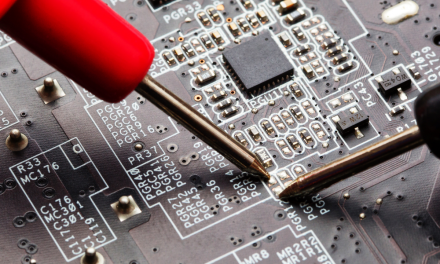Industrial Metaverse Expected to Propel Global Smart Manufacturing Revenue to US$540 Billion by 2025, Says TrendForce
In light of the metaverse’s ability to satisfy the demands of WFH, virtual reality, and simulations, the smart manufacturing industry will also likely capitalize on the rise of the metaverse and undergo an accelerated growth of related technologies, according to TrendForce’s latest investigations. Global smart manufacturing revenue is expected to increase at a 15.35% CAGR across the 2021-2025 period and surpass US$540 billion in 2025. This growth can primarily be attributed to several factors. First, industrial applications take place in closed environments, and companies that utilize such applications have generally made good progress in terms of digital transformation. Furthermore, by utilizing simulation technologies, companies are able to significantly cut down on their labor costs, project time, and wasted resources. Simulation technologies, if developed as an industry 4.0 application, also serve as the backbone of CPS (cyber-physical systems). TrendForce therefore expects the smart manufacturing industry to be perfectly positioned with innate advantages and motivations as one of the main enablers of the metaverse.
Regarding the diverse mainstream smart manufacturing tools, digital twins, which major adopters believe to be a significant application of industry 4.0, empower the simulation of the physical world through digital data, bridge the virtual world with the real world, and subsequently serve as a key technology shaping the metaverse during its infancy. In particular, Microsoft has included digital twins in its metaverse technology stack due to their ability to generate rich digital models. It should be pointed out that the vast majority of digital twins currently used for industrial applications deliver digital simulations for either a single product or a single production line primarily because the reliability of simulated models requires a database containing sufficient data from the modeled product itself. Some examples of digital twins in action include Boeing utilizing digital twins to build engines, Unilever using simulated production lines to cut down on waste production, and Siemens Energy and Ericsson respectively leveraging Nvidia’s Omniverse platform to operate power plants and perform predictive maintenance as well as simulating equipment allocations for 5G networks.
Digital twin technologies will progress towards wider deployments and deeper operations in response to the rise of the metaverse and to the growing complexity of digital simulation models used for constructing products. Hence, relevant digital twin technologies will also begin to emerge in the market. In terms of width of deployment, digital twins need to model more comprehensive and extensive virtual objects and spaces that form the operating environment in the metaverse in order to achieve better predictive accuracy. Relevant technologies include 5G, WiFi 6, cloud and edge computing, smart sensors, as well as more resilient communication environments/computing platforms, and more diverse sensors. In terms of depth of operation, developments in technologies used for industrial drones, cobots, and machine vision feature improved precision and operability that enable AI-based decisions made in the virtual space to be applicable to decision-making scenarios in the real, physical world.
On the whole, taking into account the rapid development of AR/VR and HMI technologies, as well as other factors including economic outcomes, feasibility of operation, and the overall industrial environment, TrendForce believes that the direction of metaverse-based digital twin application development for industrial purposes will focus on human resource training, remote diagnostics, energy monitoring, and predictive maintenance in the short and medium terms. For instance, Rockwell, Siemens, ABB, Advantech, Ennoconn, and Delta are some of the companies that have made good progress in this area. In the long term, on the other hand, individual companies will likely be able to construct virtual factories in the collaborative industrial metaverse and thereby connect their various factory locations or even engage in cross-industrial collaborations. With regards to long-term applications, then, companies that are competent in industry 4.0 development and possess various lighthouse factories and vast databases will likely to be pioneers in the industry; leading examples include Bosch, Schneider Electric, Haier, and Foxconn.












